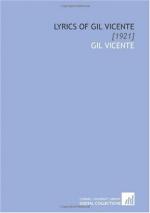|
This section contains 4,693 words (approx. 16 pages at 300 words per page) |

|
SOURCE: Hart, Thomas R. “The Dramatic Unity of Gil Vicente's Comédia de Rubena.” Bulletin of Hispanic Studies 46, no. 2 (April, 1969): 97-108.
In the following essay, Hart refutes the common critical opinion that Vicente's first romantic comedy lacks unity.
Many readers of Gil Vicente's Comédia de Rubena would doubtless agree with the play's most recent editor, Giuseppe Tavani, that ‘la sua struttura è inconsistente, assolutamente priva di unità; l'azione è frammentaria e contravviene, si direbbe quasi programmaticamente, alle unità di tempo, di luogo e di svolgimento.’1 In particular, ‘la terza scena [potrebbe] essere considerata un autonomo Auto de Cismena’ (15).
Tavani suggests several possible reasons for the play's lack of unity. One is that Rubena, performed in 1521, is Vicente's first attempt at a romantic comedy, a kind of play he was soon afterwards to undertake with such happy results in the Comedia del viudo and in Don Duardos. Another is that...
|
This section contains 4,693 words (approx. 16 pages at 300 words per page) |

|


